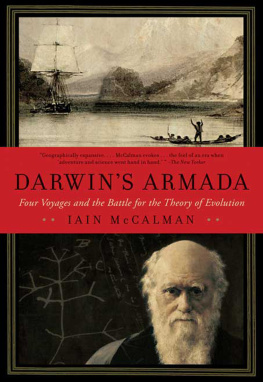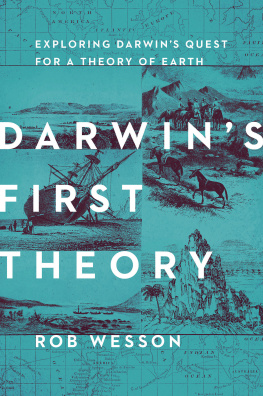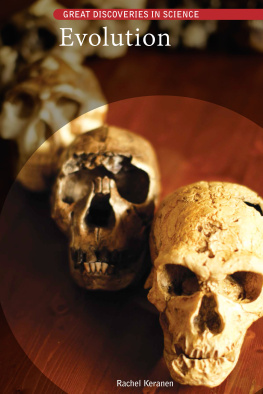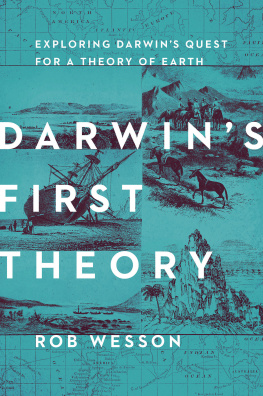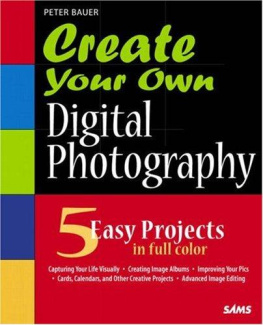DARWINS CAMERA
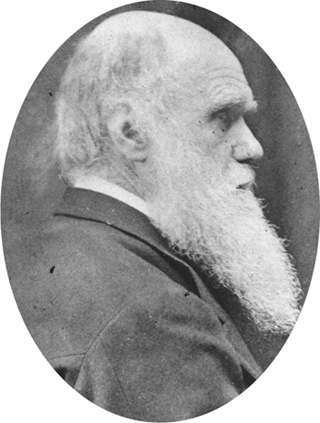
DARWINS CAMERA

ART AND PHOTOGRAPHY IN THE THEORY OF EVOLUTION
PHILLIP PRODGER


Oxford University Press, Inc., publishes works that further
Oxford Universitys objective of excellence
in research, scholarship, and education.
Oxford New York
Auckland Cape Town Dar es Salaam Hong Kong Karachi
Kuala Lumpur Madrid Melbourne Mexico City Nairobi
New Delhi Shanghai Taipei Toronto
With offices in
Argentina Austria Brazil Chile Czech Republic France Greece
Guatemala Hungary Italy Japan Poland Portugal Singapore
South Korea Switzerland Thailand Turkey Ukraine Vietnam
Copyright 2009 by Oxford University Press, Inc.
Published by Oxford University Press, Inc.
198 Madison Avenue, New York, New York 10016
www.oup.com
Oxford is a registered trademark of Oxford University Press
All rights reserved. No part of this publication may be reproduced,
stored in a retrieval system, or transmitted, in any form or by any means,
electronic, mechanical, photocopying, recording, or otherwise,
without the prior permission of Oxford University Press.
Library of Congress Cataloging-in-Publication Data
Prodger, Phillip.
Darwins camera : art and photography in the theory of evolution/
Phillip Prodger.
p. cm.
Includes bibliographical references.
ISBN 978-0-19-515031-5
1. Darwin, Charles, 18091882. Illustrations. 2. Darwin, Charles,
18091882 Art collections. I. Title.
QH365.Z9P76 2009
704.9495 dc22 2008033854
9 8 7 6 5 4 3 2 1
Printed in the United States of America
on acid-free paper
LO, here a CAMERA OBSCURA is presented to thy view, in which are lights and shades dancing on a whited canvas, and magnified into apparent life! if thou art perfectly at leisure for such trivial amusement, walk in and view the wonders of my ENCHANTED GARDEN.
ERASMUS DARWIN, The Botanic Garden
TIMELINE
1806 | Charles Bells Essays on the Anatomy of Expression in Painting published |
1809 | Birth of Charles Darwin |
1816 | Fitzwilliam Museum, Cambridge, founded |
1824 | National Gallery of Art, London, founded |
182527 | Darwin studies at University of Edinburgh, attends Charles Bells lectures on expression |
182731 | Darwin studies at University of Cambridge, visits Fitzwilliam Museum |
183136 | The voyage of the H.M.S. Beagle |
1839 | Journal of Researches, also called The Voyage of the Beagle, published; Invention of photography announced |
185152 | Wet-plate negatives available |
1857 | Oscar Rejlander, The Two Ways of Life, exhibited |
1859 | On the Origin of Species published |
1862 | G. B. Duchenne de Boulogne, Mechanism of Human Facial Expression, published |
1865 | Louis Agassiz, photographic survey of Brazil to disprove evolution |
1869 | Thomas Henry Huxley begins photographic survey of peoples of British Empire |
c. 1869 | Darwin begins to collect photographs of emotional expressions |
1871 | The Descent of Man published |
1872 | Expression of the Emotions published |
187273 | Muybridge photographs of galloping horses |
1874 | First gelatin dry-plate negatives available (not mass-produced until 1880) |
c. 1878 | Francis Galton begins to make composite photographs |
1882 | Death of Charles Darwin |
CONTENTS
The prints, drawings, and photographs Darwin collected in the 1860s and 1870s
Strategies Darwin used in illustrating his books
Darwins knowledge of art history and use of illustration in his books
How passion manuals informed Darwins research
Connections between photography and biology in the 1860s
How photography in mental hospitals influenced Darwin
Darwins quest for pictures of expressive babies
The artists who guided Darwins search for pictures
Oscar Rejlander, Darwins favorite photographer
Posing for Darwins pictures
The aftermath of Darwins experiments
PREFACE
THIS BOOK BUILDS on the achievements of the Darwin industry, that large international community of scholars who have dedicated themselves to studying Charles Darwins life and work. Darwin is an intriguing subject, and not just because his theories were important and controversial. He wrote letters to nearly everyone he knew, kept copies of virtually all incoming and outgoing correspondence, and made organized notes about his ideas as they developed. So he is not just an extremely interesting scientist, he is also an ideal test case for how scientific theories developed and spread in Victorian England.
In 1948, largely as a result of the efforts of his son Francis, the majority of Charles Darwins archive was transferred to Cambridge University Library, where it is currently held in the librarys department of manuscripts. Although many interesting items are scattered in other locations there are smaller concentrations, for example, at Darwins last home, Down House, in Downe, Kent, and at the John Murray Archive in London the material at Cambridge is authoritative. Cambridge boasts approximately 9,000 of the 14,500 known letters sent to and from Darwin in his lifetime, as well as his notebooks, nearly all of his personal library, and numerous related items such as handwritten manuscripts, edited proofs, newspaper clippings, and even a handful of specimens from the Beagle voyage.
The Cambridge archive also includes an amazing collection of original photographs, drawings, watercolors, and prints commissioned, collected, and in some cases even drawn by Darwin, which are the heart of this book. Most are kept in posthumously bound albums, where they roughly reflect the order in which Darwin organized them (figure P-1). A Herculean project to catalogue and transcribe the letters in the archive, called the Darwin Correspondence Project, began in 1974 and is ongoing. There is an enormous amount of work to do transcribing, checking, and cross-checking. As of this printing, the project has published bound transcriptions of all known letters through 1867 and has made most other letters available online. At the time I performed the research for this book, the letters from the late 1860s and early 1870s, when Darwin began to look seriously at art and photography, had not been published. The Darwin Correspondence Project team was an enormous help in my research, sharing early drafts of key letters and pointing out interesting connections. Nevertheless, because published versions of most relevant letters did not exist, the transcriptions contained herein, unless specifically noted, are my own. I should also note that the Darwin Correspondence Project has for the time being set aside visual material such as prints, drawings, and photographs for later study. As a result, all identifications of artists, titles, dates, and media are also my own.
Next page

